Making poor business judgments is certain when you don’t understand how your clients use what you offer.
A great user experience comes from knowing your customers better than anyone else. The phrase “the customer is everything” has traditionally suited the service business well. And because services today encompass subscription-based software solutions as well as in-person interventions, knowing who your customers are, what they want, where their issues are, and what values they hold dear is more important than ever.
Customer analytics is the science of evaluating behavioral data to uncover patterns, common experiences, likes, and dislikes in your current and future customer base. But what is customer analytic software, and how does it work?
What exactly is software for customer analytics?
Simply put, customer analytics software is a kind of marketing analytics tool that analyzes all of the data you have about present and prospective consumers. Customer analytics extends beyond simple demographic facts about your customers. It can reveal how individuals behave as well as what they believe, fear, like, and desire. If something seems too good to be true, reconsider.
According to Forbes, 70% of firms increased their expenditure on customer analytics as early as 2018, with 58% reporting a substantial gain in customer retention and loyalty. Mordor Intelligence forecasted an annual CAGR of 18.2% for the analytics industry between 2021 and 2026. Because so many organizations are clearly investing in this field of study, you should as well in order to remain competitive.
I’ve selected 10 products that we believe are leaders in the field of customer analytics solutions. We attempted to identify an ideal use case for each. We hope you find it useful.
Top 10 best customer analytics software and tools
Our top selections for the finest customer analytics software in 2024 are as follows:
1. Segment
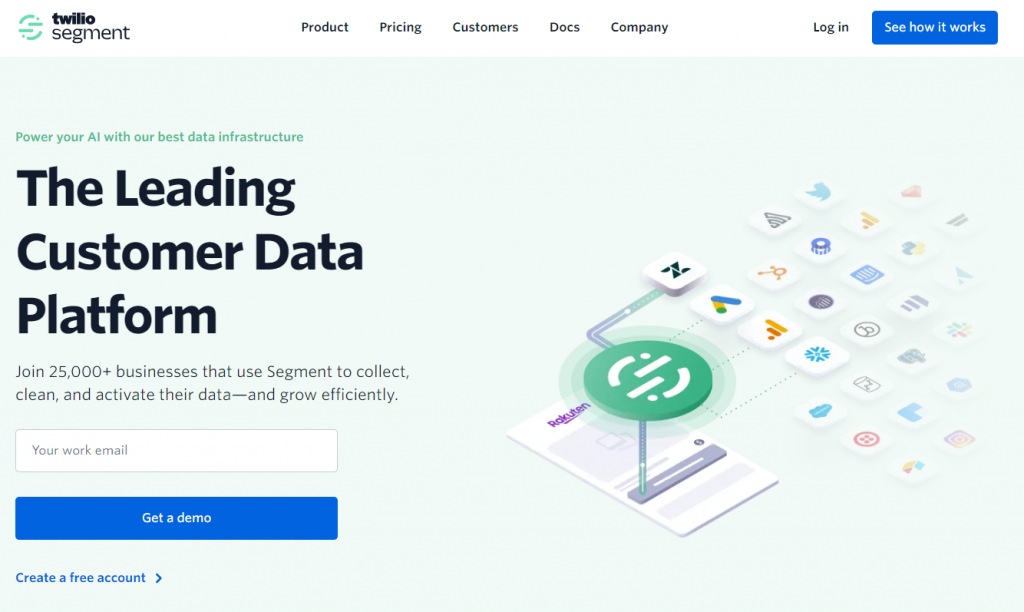
With over 20,000 customers, including well-known companies like Domino’s, Levi’s, Staples, IBM, and Annheuser-Busch (manufacturer of Budweiser beer), Segment describes itself as a customer data platform.
From the first point of contact, such as opening a marketing email, to adding products to a shopping cart or checking in to a subscription service, the platform records user activity. Segment may take advantage of any customer data stored in your CRM, warehouse database, mobile app, or online app.
Segment is named by its emphasis on data exploration for marketing, product development, or data management. The platform recognizes that analytics are only as trustworthy as the data that creates them. To that aim, they’ve built developer-friendly API connections for platforms like Google Analytics, Facebook Pixels, and Adobe Analytics. This ensures that the data you receive is comprehensive, consistent, and comparable.
GDPR, CCPA, and other privacy regulations ensure compliance. You may create several client profiles and then target them with products and marketing messages that are suited to their needs.
2. Tableau
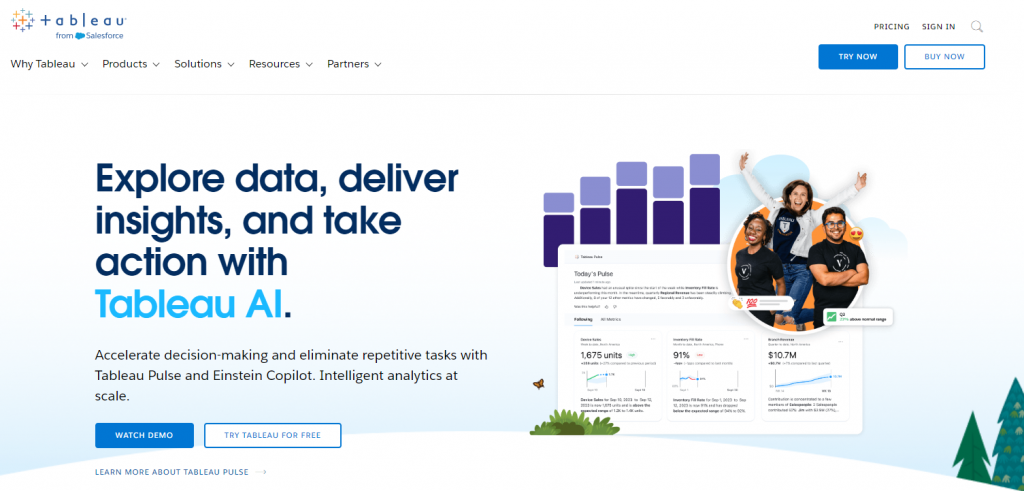
With over a million users, Tableau describes itself as the “world’s leading analytics platform.” It’s a business intelligence tool pack that includes a stunning set of dashboards for showing customer information, as well as a “prep” tool for ensuring your data is clean, thorough, and connected in the first place.
It’s one of the best options for displaying data, which makes sense. After all, the true worth of insight is in its ability to express the need for change or innovation. In Tableau, you can create your own analytics dashboards that graphically present only the metrics that are most useful to you.
The platform has an excellent mobile version, so scattered and hybrid workforces may access it on the go.
3. Kissmetrics
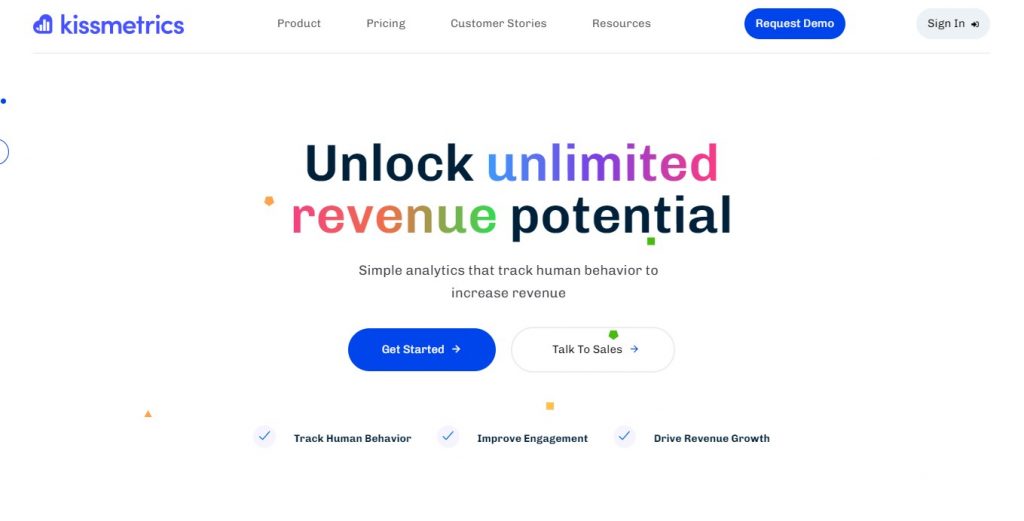
Kissmetrics describes itself as a solution for “advanced product and marketing analytics” and serves SaaS and ecommerce companies of all sizes. Unbounce, SendGrid, Microsoft, and Carvana are among the current clients.
Kissmetrics promises to measure individual consumer activity throughout the course of their whole lifetime, rather than just individual web sessions. The goal is to provide true behavioral knowledge, allowing you to develop repeat business and consumer loyalty. Customers have reported a 25% boost in trial engagement and a 30% increase in conversions.
New trials and subs, customer attrition, trial to signup conversion rate, MRR, delay to sign-up, and other indications of customer interactions are among the metrics tracked. Customer data may be divided into cohorts and populations, and simple, highly visual customer activity reports can be generated. Ready-made dashboards feature a detailed picture of the digital marketing funnel.
4. Mixpanel

Mixpanel thinks that precise marketing attribution would “help you convert, engage, and retain more users.” Companies that use it include Uber, Buzzfeed, Expedia, and Yelp. As the name indicates, Mixpanel allows you to create real-time adjustable dashboards for data collecting on the performance of your product or service.
It claims to help you better understand your sales funnel and uncover any flaws. Mixpanel is also designed for non-programmers, allowing customers to connect to enormous data lakes or virtual warehouses such as Snowflake, BigQuery, or Redshift without having to establish SQL connections.
The workflows in Mixpanel are vibrant, simple, and readily shared. Group Analytics is a B2B and SaaS analytics tool that allows you to dig deeper into how subscribers utilize your product, which may aid in marketing and product development.
Mixpanel leverages massive volumes of data to assist you in developing marketing plans for segmented cohorts of users, therefore assisting you in making sense of your customer journey. It is more suited to large corporations than to startups employing no-code platforms.
5. Plausible.io
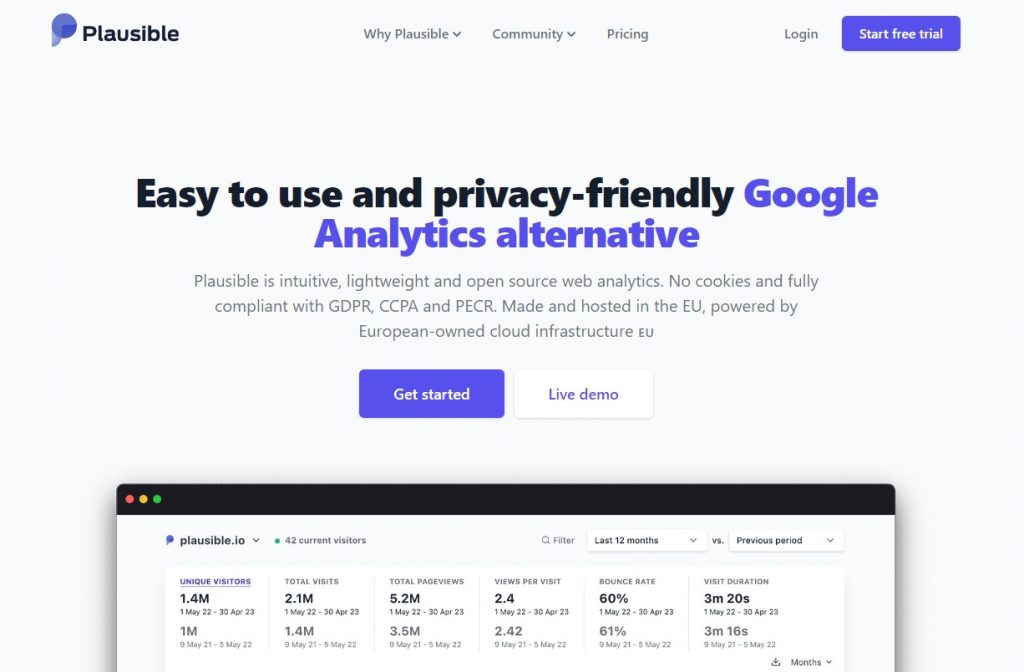
Plausible, which markets itself as an actual alternative to Google Analytics, is also strong on data security, privacy, and simplicity. It’s great for individuals who don’t need 1000s of features and instead prefer a simple dashboard that displays essential engagement indicators.
Plausible says their script is 45 times smaller than Google Analytics, so it should not slow down your site at all. This also means minimal resource usage, making it the greenest data analytic platform if that’s one of your main brand values.
In terms of privacy, Plausible is uncommon in that it does not use cookies and anonymizes all client data, preserving no specific personal information to sell on. In accordance with its openness policy, the platform’s underlying code is open source and available for scrutiny on GitHub.
6. Salesforce

Salesforce, as close to a household name as business analytics software gets, possibly doesn’t require an introduction. They collaborate with Tableau for analytics (as mentioned above), but they also provide sales, marketing, and ecommerce abilities, as well as a full CRM platform called Customer 360.
Customer 360 is a collaborative CRM solution that is made available to all departments in order to ensure that everyone is following the same playbook. It interacts with Slack for simple cross-departmental communication, and there’s even a specialized AI, Einstein, that allows sales and marketing representatives to get precise consumer behavior forecasts.
Salesforce is a strong suite with second-to-none training facilities and resources (including a blog, research papers, video material, events, and Trailhead, an eLearning platform) for large firms or SMBs with great scalability goals.
7. Amplitude

Amplitude is a customer analytics solution that, like Mixpanel, allows you to create customer journey maps to better understand your current customer experience.
Early adopters of this system include Shopify, Ford, Peloton, Webflow, and Pepsico. This data analysis tool has been named the best product analytics tool on G2, which is an important distinction.
Amplitude interacts with the portal of your ecommerce, app, or website to deliver extensive information about the performance of your product. Among the business metrics and insights you’ll receive are churn rates, feature engagement rates, and shopping cart abandonment rates. Event tracking, on the other hand, allows you to track any component of your product that you select.
To go deeper into such topics, Amplitude offers A/B testing, cohort development, and user behavior analysis across a variety of devices. Amplitude would be an excellent investment if you are developing a digital product with the objective of attaining critical mass.
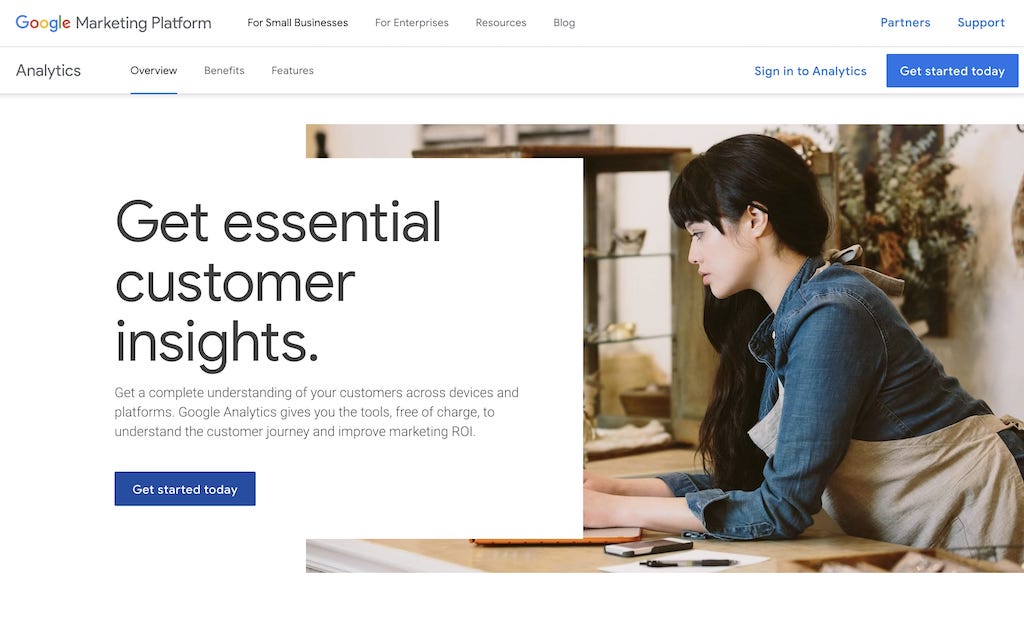
The next household brand on our list is Google Analytics, which is a great place for SMBs to start when researching prospect behavior. You won’t discover anything about your existing clients that your CRM doesn’t already know. However, Google is an excellent source of information on how prospects discover your landing pages and interact with your content and advertising.
You’ll also get access to data that only Google has, such as point of origin information, allowing you to identify which sites are bringing traffic your way. Best of all, for a startup or small business, Analytics is free as long as you have a Google account (which comes with any of Google’s other products, such as Drive or Gmail).
9. Hotjar
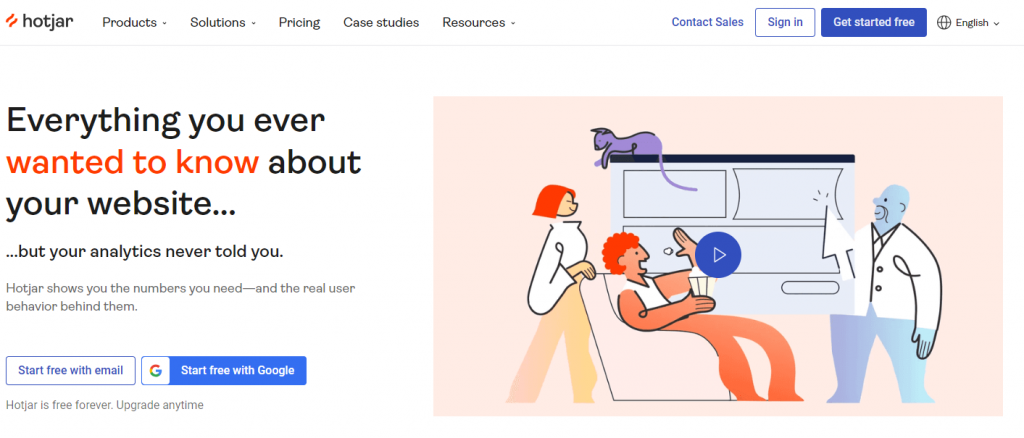
Hotjar is another big analytics tool, with over 900,000 websites utilizing it. Clients include Adobe, Nintendo, Decathlon, and Panasonic. They reveal how customers behave using some unique features such as page heatmaps (showing which portions of your site are more popular) and recordings (anonymized screen recordings of individual user activity).
There are also plug-in widgets for your site, such as feedback forms and surveys, as well as dozens of connectors, either natively or via Zapier. The Hotjar dashboard shows behavioral indicators that go beyond the norm, such as consumer sentiment (how people feel about your product or service).
You may compare data in different snapshots, for example, to see how a product modification or site redesign influenced consumer interaction. Hotjar is one of the platforms that best allows for product or service innovation.
10. Pendo
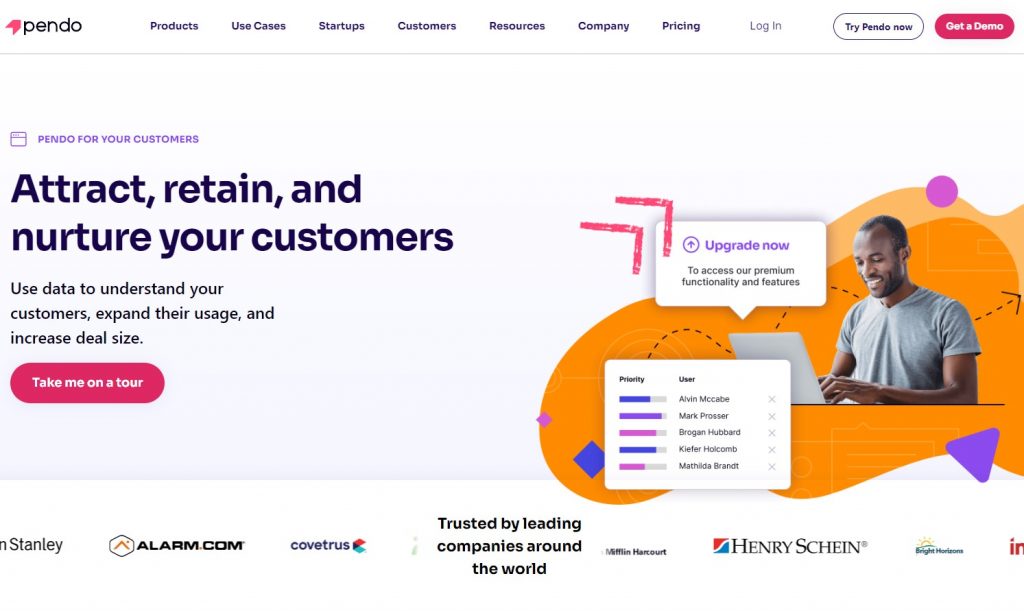
Pendo’s primary priority is income, and they use information about customer behavior to determine your most profitable items and activities. It categorizes users as high or low revenue producers and drives corresponding marketing and sales spending.
Citrix, Insightly, and Infor are among the platform’s SaaS B2B clients. For example, Insightly reports a 1540% boost in user onboarding engagement while doubling freemium to premium membership conversions. Pendo’s main success story is free trials, with a 60% increase in conversions promised on their website.
Pendo has received 4.5 stars from almost 200 Capterra ratings, despite some technical difficulties with URL tracking being mentioned. However, if you have any deployment troubles, Pendo’s support and user feedback are excellent.
What are some actual-life examples of customer analytics?
Here are some typical examples of how you may utilize the insights received from the above platforms to optimize your products or services, make the correct business choices, convert more prospects, or generate revenue:
- Acquisition: Where prospects come from, when they arrive on your site, what other items they’re interested in, how they act on your site, important demographics. As a result, landing pages have improved, marketing has improved, and SEO has improved.
- Revenue: Determine which clients are most frequent and have the highest LTV (customer lifetime value). As a result, price tiers have been improved, and new add-ons have been devised to increase income.
- Retention: What is your return on investment rate, and what causes certain customers to leave their subscriptions? Which offers, discounts, and demos are the most effective in converting prospects? As a result, there is a greater emphasis on churn reduction techniques as well as better-designed discounts.
- Engagement: What are the most popular product features? What do your clients have to say about you on social media? How much time do they devote to your service? As a result, product updates and new features have been added to promote platform usage.
These are just a few examples of the types of information about customers that may be obtained from customer data. Each month, software engineers create increasingly advanced algorithms and AI-driven systems, so it’s important to have an ear to the ground.

